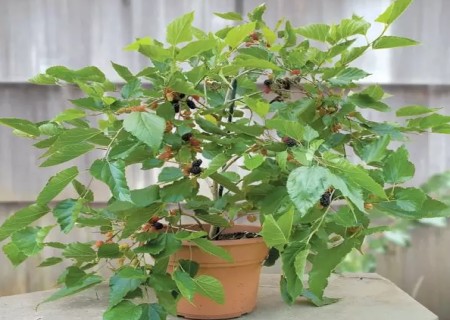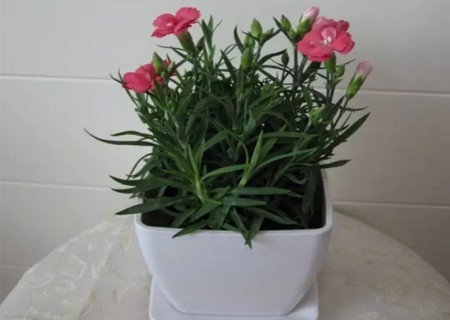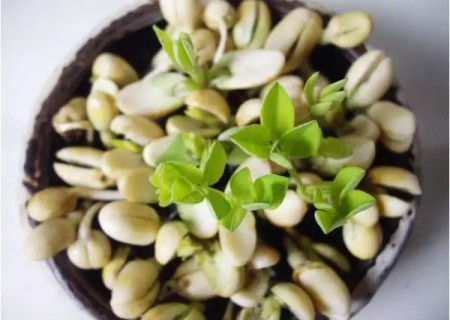Planting techniques of potted Mulberry
The fruits of mulberry trees are the mulberries I used to pick and eat when I was a child. their shelf life is very short, and they are basically not sold on the market, but we can plant them in flowerpots, not necessarily in front of the courtyard. We grow in the balcony, balcony is very good, sunny enough.
There is not so much land for you to plant mulberry trees in the city, so you can only use flowerpots. If the potted plant is planted, we have to use a large pot because the mulberry grows bigger. Potted mulberry trees need to choose varieties that like short stalks, and they also need to be pruned frequently to control the plant type, and they can buy cutting seedlings to plant directly, not sowing all kinds of plants.

The main propagation methods of mulberry are sowing, cutting, root division, grafting, or direct planting by buying seedlings.
Planting time: December to March of the following year
Variety: mainly agricultural mulberry series.
Seedling selection treatment: separate the seedlings according to size, plant separately, cut off the withered roots and overlong roots before planting, and soak them in the mud, which can improve the survival rate.
I. preparation before transplanting
1, potted mulberry needs about 20 liters of pottery pot, good drainage, but with the growth of cuttings, need to change pots every year, pot soil is loose, fertile, good drainage, the soil is slightly acidic or neutral.
2. To apply sufficient base fertilizer, fully mature pig and cow manure and soil miscellaneous fertilizer are required to be used as base fertilizer, combined with deep ploughing to bury organic fertilizer deep in the soil.
II. Planting
1. Planting period: generally, it is better to plant in winter and early spring, and the soil temperature is required to be stable at 10 ℃ 12 min.
2. Seedling selection and treatment: strong seedlings of improved varieties of mulberry should be selected without diseases and insect pests. When planting mulberry in summer and autumn, the roots of mulberry seedlings should not be hurt as much as possible, and the roots of mulberry seedlings should be preserved; when planting mulberry in winter and spring, the overlong main roots should be trimmed slightly to make the lateral roots more frequent. Before planting, the roots should be dipped in mud mixed with phosphate fertilizer, which is conducive to root survival.
3. Planting method: the mulberry seedling root is buried in the mulberry line soil, the cover soil is gently lifted to make the root stretch, stamping and then Yong a layer of loosening soil, it is required to pass through the rhizome 3 cm, drench enough to fix the root water, the plant is cut within 2 days after planting, the height of the remaining plant is 10 ~ 20 cm, and the tip is cut off to reach a unified height.
III. Management after planting
1. Mulching: cover the soil with straw and weeds, preserve water and prevent drought, reduce plant water loss, restrain weeds, prevent soil consolidation and fertilize the soil.
2. timely watering to prevent drought and eliminate stagnant water: in the first few months of planting, it is necessary to dry and thoroughly irrigate the basin soil to ensure that the soil is slightly moist or not moist, and after mulberry growth is stable, watering should be properly controlled, and there is little watering in winter. Keeping proper soil moisture is the key to the survival and growth of new mulberry. The soil is drenched in time when it is dry and drained when it is rainy.
3. Loosening soil and weeding: after a certain period of time, especially after rain, the soil is easy to harden, combined with weeding to loosen the soil, which is beneficial to the growth of mulberry roots.
4. Fertilization: after sprouting and opening leaves of new mulberry, dung water or urea water and fertilizer were applied once. After that, according to the growth of new mulberry, topdressing fertilizer was applied for 1 / 2 times. The amount of fertilizer applied each time in the small tree stage should not be too much, and should eat less and eat more. The average fertilizer should be given properly in the growing season, diluted liquid fertilizer or organic fertilizer should be given every 1-2 weeks, and a layer of mature organic fertilizer should be spread under the bottom of the basin when planting to ensure that the mulberry has adequate nutrition.
Warm reminder:
Other need to pay attention to is to avoid frequent watering, basin soil can not accumulate water, otherwise easy to rot roots, too much watering is also easy to cause a variety of fungal infections, or attract insects. Mature mulberries will turn crimson, purple or black, which is not the best at this time. They can be eaten after being picked and washed, usually between the end of spring and the end of summer.
Considerations for colonization:
1. Planting: it is required that the seedlings should be upright, the roots extend, and the shallow planting should be steady. it is appropriate to put 10cm into the soil at the grafting interface, pour enough water to fix the roots, and cover the plastic film.
2. Cut dry: cut off the stem of the seedling 5-7 inches from the ground after transplanting, cut in spring for those planted in winter, and cut with planting in spring, which requires smooth cutting.
3. Thinning buds: when the new buds grow to 4-5 inches, each plant will leave 2-3 mulberry buds with strong development and reasonable direction to form strong branches.
4. Heart picking: for those with only one bud, pick the heart when the bud grows to 4-6 inches, promote its branches and form a garden ahead of time.
5. Make up the gap: check the mulberry buds in time after germination, and replant the mulberry buds if they do not survive.
6. Drainage and irrigation: drought should be watered and waterlogging should be drained in rainy days to improve the survival rate.
7. Strengthen weeding and fertilization: timely shallow ploughing and weeding, thinning buds, applying 10-15 kg urea per mu, or watering biogas liquid, human feces and urine, etc.
8. Intertillage weeding: once a year after sericulture, weeding is carried out 2-3 times a year according to the growth of weeds.
Time: 2019-05-24 Click:
- Prev

Planting methods of Carnation Seeds
Carnation belongs to the genus carnation, which has many aliases, such as lion carnation, musk carnation, carnation, Dutch carnation and so on. There are many varieties of carnations on the market now. in the indoor environment at room temperature, as long as they are properly maintained, they can blossom continuously and are often offered flowers on Mother's Day.
- Next

Pot planting method of Peanut
Peel off peanuts and soak in water for a week, and the final soaking time must be based on the state of the seeds, and the water must be changed every day! Take off your peanut underwear during soaking. Choose a suitable size non-porous basin, cultivate soil 9% full, peanut ostrich (bud point down, butt up) half buried in the soil
Related
- Fuxing push coffee new agricultural production and marketing class: lack of small-scale processing plants
- Jujube rice field leisure farm deep ploughing Yilan for five years to create a space for organic food and play
- Nongyu Farm-A trial of organic papaya for brave women with advanced technology
- Four points for attention in the prevention and control of diseases and insect pests of edible fungi
- How to add nutrient solution to Edible Fungi
- Is there any good way to control edible fungus mites?
- Open Inoculation Technology of Edible Fungi
- Is there any clever way to use fertilizer for edible fungus in winter?
- What agents are used to kill the pathogens of edible fungi in the mushroom shed?
- Rapid drying of Edible Fungi

